
Earthworm Jim is a 1994 run and gun platform game developed by Shiny Entertainment, featuring an earthworm named Jim, who wears a robotic suit and battles the forces of evil. The game was released for the Sega Genesis and Super Nintendo Entertainment System, before being subsequently ported to a number of other video game consoles.

The Genesis Nomad, also known as Sega Nomad, is a handheld game console manufactured by Sega and released in North America in October 1995. The Nomad is a portable variation of the Sega Genesis home video game console. It could also be used with a television set via a video port. It was based on the Mega Jet, a portable version of the home console designed for use on airline flights in Japan.

Columns is a match-three puzzle video game released by Sega in 1990. Designed by Jay Geertsen, it was released by Sega for arcades and then ported to several Sega consoles. The game was subsequently ported to home computer platforms, including the Atari ST.

Ecco the Dolphin is an action-adventure game developed by Ed Annunziata and Novotrade International and published by Sega for the Mega Drive/Genesis in 1992. Versions for the Sega CD, Master System and Game Gear were released the following year. It is the first installment in the Ecco the Dolphin video game franchise. The player character is a bottlenose dolphin who travels through time to combat hostile extraterrestrials in Earth's oceans and on an alien spacecraft.
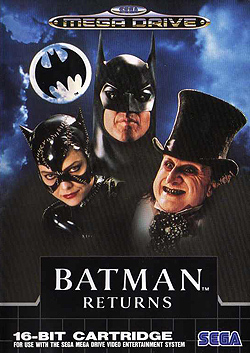
Batman Returns is the name of several video games for various platforms based on the 1992 film of the same name.
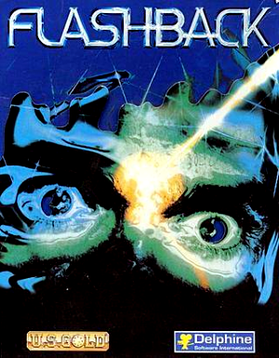
Flashback, released as Flashback: The Quest for Identity in the United States, is a 1992 science fiction cinematic platform game developed by Delphine Software of France and published by U.S. Gold in the United States and Europe, and Sunsoft in Japan.

Primal Rage is a fighting game developed and released by Atari Games for arcades in 1994. The game takes place on a post-apocalyptic version of Earth called "Urth". Players control one of seven prehistoric beasts, that battle each other to determine the planet's fate. Matches feature many of the conventions of fighting games from the era, including special moves and gory finishing maneuvers. Ports were released for home video game consoles and personal computers. Efforts to perfectly emulate the arcade original have been unsuccessful due to the use of an unusual copy protection method. Toys, comics, a novel and other merchandise tie-ins were produced. More than 1.5 million copies of the game were sold.

Castle of Illusion Starring Mickey Mouse is a 1990 platform game developed and published by Sega and released for the Mega Drive/Genesis. An 8-bit version of the game was later released for the Master System and Game Gear. The game follows Mickey Mouse on a quest to save Minnie Mouse from the evil witch Mizrabel. It is the first game in Sega's Illusion video game series starring Mickey.

The Sega Genesis, also known as the Mega Drive outside North America, is a 16-bit fourth generation home video game console developed and sold by Sega. It was Sega's third console and the successor to the Master System. Sega released it in 1988 in Japan as the Mega Drive, and in 1989 in North America as the Genesis. In 1990, it was distributed as the Mega Drive by Virgin Mastertronic in Europe, Ozisoft in Australasia, and Tectoy in Brazil. In South Korea, it was distributed by Samsung Electronics as the Super Gam*Boy and later the Super Aladdin Boy.
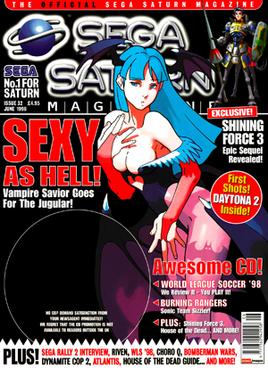
Sega Saturn Magazine was a monthly magazine from England covering the Sega Saturn, a home video game console. It held the official Saturn magazine license for the UK, and some issues included a demo CD created by Sega, Sega Flash, which included playable games and game footage. In 1997, the magazine reported a readership of 30,140. The last issue, 37, was published in November 1998.
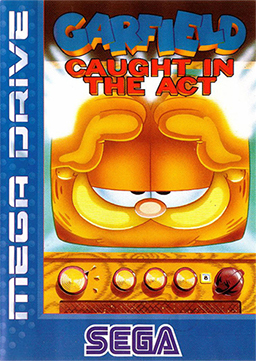
Garfield: Caught in the Act is a 1995 side-scrolling platform game developed and published by Sega for the Genesis and Game Gear. A Microsoft Windows version followed. It is based upon Jim Davis' comic strip cat, Garfield, and draws inspiration from Davis' 1984 book Garfield: His 9 Lives. Odie scares Garfield while they are watching television and they fall on the TV, breaking it. Both characters attempt to repair it before Jon Arbuckle catches them; however, the thrown spare parts become an electronic monster known as the Glitch, transporting Garfield into the TV, where he must defeat him in order to get out.
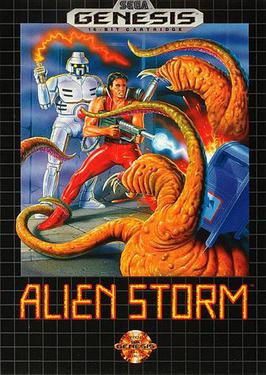
Alien Storm (エイリアンストーム) is a beat 'em up shooter released as an arcade video game by Sega in 1990. It was ported to the Genesis/Mega Drive and Master System. The Mega Drive version was re-released on Wii's Virtual Console in 2007 and was also included on Sonic's Ultimate Genesis Collection for Xbox 360 and PlayStation 3. The game was also re-released on the Nintendo Switch Online + Expansion Pack in 2022.

Mega was a British monthly magazine that covered the Mega Drive video game console. During its time as one of the main Mega Drive publications, Mega covered the "golden age" of the Sega Mega Drive from 1992 to 1995. The magazine went through many changes including a re-design in content and layout before being sold to a rival publisher.

Dragon: The Bruce Lee Story is a fighting video game developed and originally published by Virgin Interactive Entertainment in Europe for the Sega Genesis in June 1994. It is based on the 1993 film of the same name, which is a semi-fictionalized account of the life of Hong Kong-American actor and martial artist Bruce Lee. Following the events of the movie, players take control of Bruce Lee across several stages that takes places in different time periods of his life and fight against some of his adversaries.

Mega Power was launched following the success of Paragon Publishing's first publication, Sega Pro. Dave Perry along with a small editorial team helped the magazine become the first console publication to include a cover CD. The magazine was in circulation between August 1993 and July 1995.

Paragon Publishing Ltd was a magazine publisher in the UK, which published computer games and other entertainment titles from 1991 to 2003.
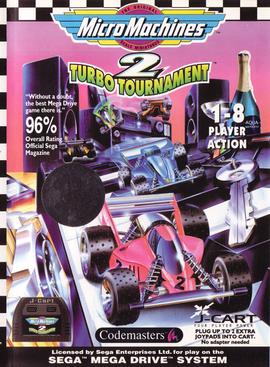
Micro Machines 2: Turbo Tournament is a 1994 racing video game developed by Supersonic Software and published by Codemasters for the Sega Mega Drive. The sequel to Micro Machines, the game is themed around Galoob's Micro Machines toys, and players race around environments in miniature toy vehicles. Micro Machines 2: Turbo Tournament adds new vehicles and game modes, and the Mega Drive version was released on J-Cart, enabling up to eight players without a multitap.
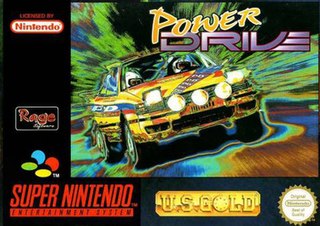
Power Drive is a 1994 racing video game developed by Rage Software and published by U.S. Gold. The player competes in rally driving in various countries.















